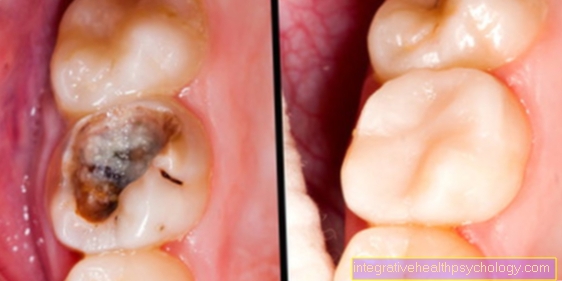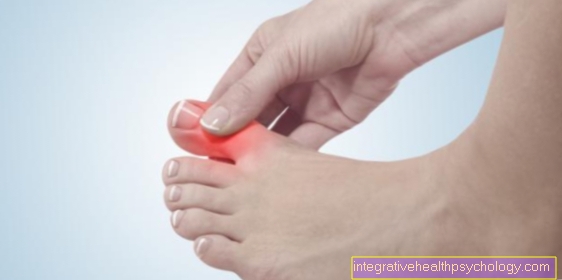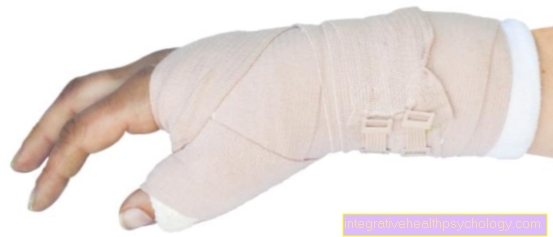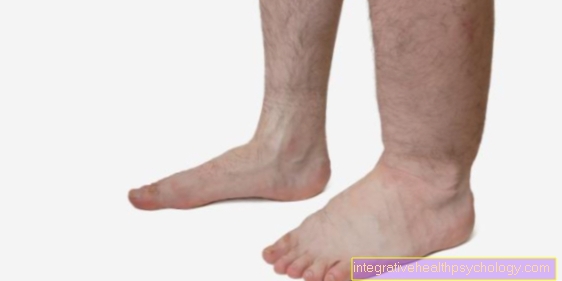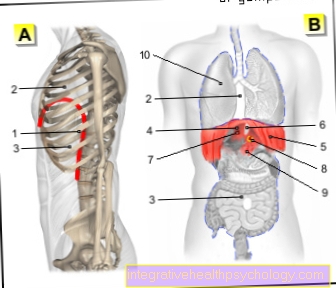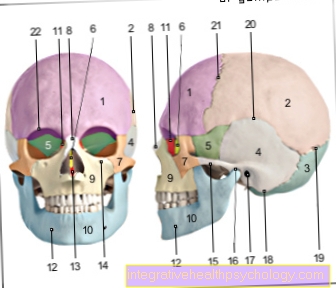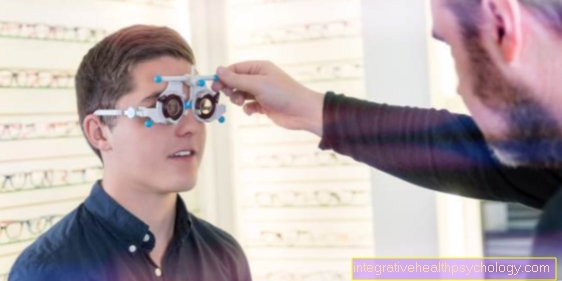UV radiation
Synonyms in a broader sense
UV light, ultraviolet light, ultraviolet radiation
English: uv - radiation
introduction
The term UV radiation is an abbreviation for "Ultraviolet radiation" (also: ultraviolet light or ultraviolet light) and describes a certain wave range of light.
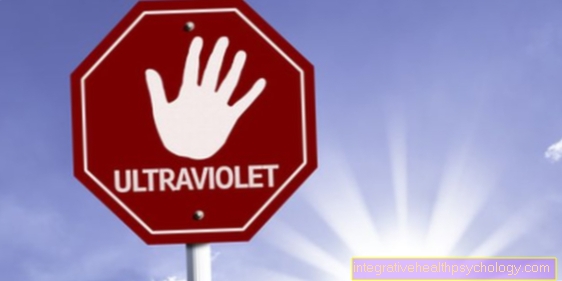
The most important natural source of UV radiation is the sun, but so are others
- Stars,
- Northern Lights and
- Pulsars
can be the origin of UV light (in addition, UV radiation can now also be produced artificially, for example
- UV laser
- Welding machines and
- Mercury vapor lamps
able to emit UV light). Sunlight can be divided into three areas: on the one hand, the radiation that is visible to us, on the other hand, the invisible infrared radiation and the ultraviolet radiation. Ultraviolet means something like "beyond purple“, Which means that the UV light in the color spectrum begins practically below the limit at which people can no longer perceive the color purple.
Classification
The UV radiation itself can also be divided into three elements.
For one thing, you have that UV-A radiation with wavelengths of 315 to 380 nm. This is hardly affected by the Ozone layer filtered out and is therefore the part of the UV radiation that reaches us most strongly on earth.
The UV-B radiation with wavelengths between 280 and 315 nm 90% of it is intercepted by the ozone layer, so it only reaches us less.
The UV-C radiation With 100 to 280 nm (below 100 nm one also speaks of “Extreme UV light“, EUV, XUV) is almost completely absorbed by the ozone layer and therefore does not actually reach the earth at all.
Intensity of the UV radiation
The shorter-wave light, the more energetic it is and can achieve a higher biological effectiveness.
How intense that UV radiation fails, but also depends on other factors, including the season (in spring and summer the UV radiation is strongest), the time of day (especially at noon there is intense UV radiation), the geographical location ( especially at the equator there is a high level of UV radiation), the condition of the ozone layer (under ozone holes a higher proportion of the UV radiation through to humans) and the sky (clouds are also able to intercept a small proportion of UV radiation). In addition, the environment also has an effect on the intensity of UV radiation, as snow or water surfaces, for example, can scatter UV radiation, which also increases its extent.
Effect on the skin
UV radiation in general is very energetic and has several important meanings for humans. Probably the most famous of these is the risk they take for the skin represents. Here you have to once again distinguish between the effects of UV-A- and the the UV-B-Distinguish radiation.
The UV-A radiation does not have such a high energetic potential and is therefore hardly for sunburn responsible.
Sometimes, however, UV-A rays can cause a so-called Sun allergy or other light-related Rashes to lead. The long waves do not penetrate the skin that deep, they only reach the dermis.
Therefore, they lead to a tan relatively directly (this light causes a change in the conformation of the pigment melanin, which is responsible for the coloring of the skin), but it only lasts for a very short time and does not leave a permanent protective layer on the skin. In addition, the radiation can Proteins denature in the skin and especially in the collagen fibers it contains, causing them to lose their shape.
However, these effects only become noticeable later in the form of premature skin aging and increased wrinkling. Besides, that ensures UV-A light for indirect damage to the genetic material (DNA), which over time increases the risk for a particular Skin cancer, malignant melanoma, increases.
UV-B radiation is more energetic and therefore more dangerous. Since their short waves can penetrate deeper into the skin, they are also associated with a high risk of sunburn. On the other hand, they also cause the pigment melanin to be formed in the epidermis, which results in a delayed but long-lasting tan of the skin that offers real protection from light.
The UV-B radiation leads to direct damage to the DNAby causing strand breaks there. This in turn increases the risk of developing skin tumors. The extent of all these dangers increases both with the frequency and with the intensity with which one is exposed to sunlight and thus to UV radiation. To prevent them, you shouldn't spend too much time in direct, strong sun and always ensure adequate UV protection with the help of textiles and / or creams or sprays.
However, UV radiation not only has bad effects on humans, on the contrary! It is absolutely necessary to keep our bodies out cholesterol Cholecalciferol (Vitamin D3) can form. A lack of vitamin D leads to rickets, a disease that is primarily associated with a disruption of bone metabolism, but also with muscular disorders and an increased susceptibility to infections. Also an influence on the state of Central nervous system and thus the mood could be described. So it comes about that many people feel more comfortable in sunlight or suffer from a so-called "winter depression" due to a prolonged lack of light.
It is also assumed that vitamin D can even protect against certain forms of cancer.
In addition, the energy from UV light can now be used in many areas. Just a few examples are black light, fluorescent lamps, disinfection and electronics.







